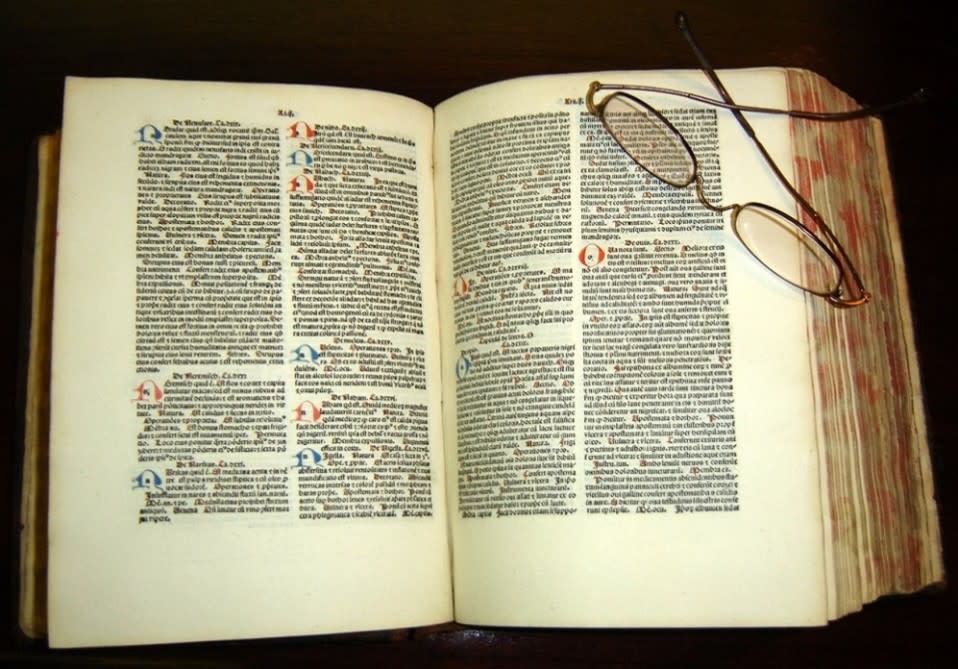- Science News
- Young Minds
- Ibn Sina – Ancient Hero of Modern Pandemics
Ibn Sina – Ancient Hero of Modern Pandemics

Canons of medicine book | Public Domain
Frontiers for Young Minds is diving into the archives to introduce you to scientists you may not have heard of before, but definitely should have! Today, we will be telling the story of the praiseworthy Persian polymath (try saying that 3x times fast!) responsible for some of the methods doctors and governments have used throughout the pandemic to help keep us safe – Ibn Sina.
The last two years have been tough. Schools have closed, some of us haven’t been able to go to work or we’ve been working from home, and all of us have missed spending time with our friends and families. Lockdowns and quarantines – policies where the government and health councils tell people to avoid contact with others – have helped to control the pandemic. But few people know where these approaches originated from…
A Bright Pupil
Born in 980 CE in the village of Afshana, today located in Uzbekistan, the “father of modern medicine” known as Ibn Sina in the Islamic world had the full name Abu Ali al-Hussain ibn Abdullah al-Balkhi, and is also called Avicenna in the Roman version of his name.
Ibn Sina’s Persian father was a bureaucrat and governor within the ruling Samanid Empire. This afforded him a privileged upbringing. He received a robust education and, by the age of 10, had already memorised the entire Qur’an – the Islamic holy text. During in his teens, he focused on medicine and gained a reputation as a physician.
When the sultan – a ruler, in this context, similar to that of a mayor – of the of the nearby city Bukhhara fell ill, only Ibn Sina was able to cure him. In thanks, the sultan granted him access to the royal Samanid library. This introduced Ibn Sina to a treasure trove of science, philosophy, and mathematics which accelerated his education further.
The Philosophy Doctor – Writing Career and Lasting Impact
Ibn Sina began writing at the age of 21. However, often caught up in the political and religious strife of the era, his work was slowed by a constant need to remain on the move. Life was dangerous.
It was not until he found his way to the Iranian city of Isfahan, where he stayed with a local prince, that he found the stability and security to begin his work in earnest. It was here that he wrote many of the 450 texts that are today attributed to him (240 of which are still extant).
One of his most famous works, Al-Qanun fi al-Tibb (The Canon of Medicine) was an incredible encyclopedia of medical knowledge from ancient sources and contemporary Islamic scholars, and was translated into Latin in the 12th century and used as a university-level reference up to the 17th century.
Today, Ibn Sina is perhaps more well known as a philosopher than as a physician or medical authority, as he wrote important works on subjects ranging from mathematics and metaphysics (e.g. the existence of God), to physical sciences (astronomy, earth sciences), psychology, psychiatry and the use of logic to establish truth. But actually his medical contributions were equally significant.
Many of his discoveries and practices, such as using wine as a wound dressing, were employed well into the medieval period in Europe. He was one of the first to correctly identify a condition known as ‘Persian Fire’, which we now diagnose as anthrax, and he helped to establish sweet-tasting urine as a symptom of diabetes long before the advent of blood tests.
Perhaps most importantly, he suspected that some diseases were spread by tiny organisms too small to see with the human eye. To prevent people from spreading these tiny organisms to one another, he came up with a system of isolating the sick for forty days; he called this method al-Arba'iniya (quite literally, ‘the forty’ in Arabic). We can see this clearly as the root of modern quarantine, which is extremely effective in preventing disease spread.

Iranian Postage Stamp | Public Domain | URL
Death and Legacy of Ibn Sina
Unfortunately, whilst living in Isfahan, disaster struck: Ibn Sina fell ill with colic. This is an intense pain in the abdomen, usually urinal or intestinal (relating to our digestive system). He tried to treat himself with celery-seed enemas, but it is believed that an attending slave altered the dosages, and his symptoms only worsened for many years.
On a journey to Hamedan, Ibn Sina took a turn for the worse. After a long battle with his condition, he died aged 58 in 1037, ultimately passing in what was the holy month of Ramadan.
The foundational importance of the medical work of this remarkable polymath is often forgotten, but it is high time that we recognise the brilliance of Ibn Sina. Particularly, we owe him gratitude for his ancient contribution to our modern battle against pandemics and disease.
Do you know the story of a forgotten scientist that should be heard? Email us with your idea at kids@frontiersin.org!







